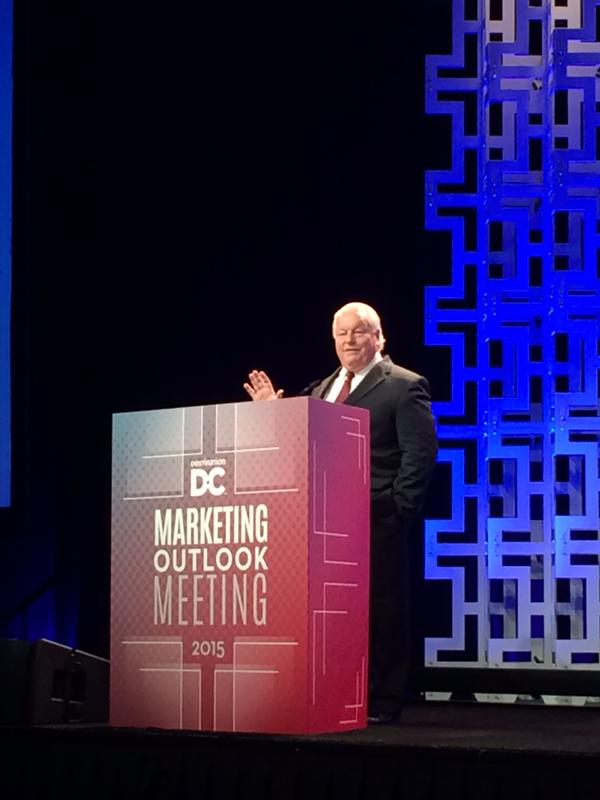|
When designing your online shopping experience, consider what platform your intended audience will use for purchases. In the U.S. and Europe, most consumers still use the desktop, with only 30% of U.S. e-commerce sales coming from mobile devices. However, within the U.S. there are large demographic differences. Surveys show that hispanics in the U.S. tend to shop far more on their mobile devices then other demographic groups, so if your products or services target that market, you should spend extra effort testing the user experience on a small phone with relatively slow speeds.
Keep in mind when planning for 2016 that mobile growth rates vary tremendously from country to country, and just like in the U.S. there will be pockets of consumers who have different shopping habits. So, when you localize the shopping experience for each market, do your homework and optimize for the type of buyer, the download speed, and the likely device. And don't forget to check our blog from November 3rd for advice on big shopping holidays around the world.
0 Comments
Considering going global or expanding your global operations?
The U.S. government lists the top 15 countries for exports of goods.1 Canada tops the list, followed by Mexico and China. Current retail numbers show a likely softening of the U.S. market, so you'll want to pull out all the stops next year. This means localizing for niche markets within the U.S., and creating marketing campaigns for each local market outside the U.S. Tailor your message, translate product manuals and packaging, carefully consider color choices for websites and product packaging, and staff up so that you can answer customer questions in multiple languages. The more effort you make to reach out to customers in their own languages, the more likely your sales will take off. You may even need to do some language adjustment for English speaking countries. Some terms that you use might come across properly. For example, did you know that if you tell a group of U.K. business people that you want to table a matter, they'll think that means you want to discuss it right then? Be sure that the words you use mean the same thing overseas. And, as always, avoid translating humor. Either re-write it to suit the local market or leave it out altogether. Start your globalization process by researching potential markets; just 15 countries account for nearly 75% of all U.S. exports. In order, they are:
1. http://www.census.gov/foreign-trade/statistics/highlights/top/top1509yr.html More than 60% of people prefer to buy from websites in their own language. And Common Sense Advisory also reports that the majority of people will spend more money on a product if the information about that product is in their own language. So it's clearly beneficial to localize your website for each of your markets, but how can you reduce the time and cost involved?
1. Anoint a guru of localization. As with all large corporate-wide initiatives, you need have someone lead the charge--someone who owns localization across the company. Among other things, she should be keeping track of: the different markets for which you'll be creating localized content, the content streams that will need to be translated, the array of social media feeds, and the various product line offerings. In essence, anything that will go on any website needs to be tracked and given a priority ranking. 2. Put a process in place. Planning for localization begins when you start planning for a new product or a new line extension. By building localization into the process from the very beginning you will reduce time and effort later. This does not mean that you should start translating your early draft documents into 15 languages, but that you should be looking at your different markets and determining what sort of customization will need to occur in order to launch in each of those markets. 3. Optimize User Experience For Each Market. When you begin thinking about the websites themselves, you'll need to look at overall user experience, page layout, common usage patterns for the individual markets, local color preferences, and local image preferences. Be aware of how your design will be affected by languages that read right to left, and how languages that have longer words may need more space for navigation. If you're marketing to countries with slower internet speeds, you may need to have fewer images. And, your images should reflect local aesthetics. Also, if you don't plan to offer your entire product line in a particular country, cull your pictures accordingly. 4. Adjust Your Writing Style. Once you've determined the content you will localize, don't translate it word for word, but adjust it for the local market. For example, some markets are more formal than others, some customers expect highly detailed, fact-based product descriptions, while in other markets, you'd be better off with descriptions that are aspirational in nature. 5. Create a standard glossary. This will save a lot of time in the end, especially when it comes to translating technical terms and industry jargon. Each language should have a list of common terms and phrases to ensure consistency throughout all your product and consumer marketing, ensuring that customers see the same term on your website as appears on your tv ads, your brochures, and your product manuals. 6. Localize your SEO. Make sure your titles are translated and accurate, your headers are clear, and your ALT attributes are descriptive. Over time, look at your data through Google's country filter and tweak each site to improve your retention and conversion rates. These tips should be looked at as a starting point. Localization is an ongoing process. Every new piece of content your marketing department generates needs to be examined for relevancy to each market and with an eye to adjusting it to provide the most value to those customers. RABI partners and our local D.C. team were pleased to attend the Destination D.C. marketing outlook 2015 event. Destination D.C. hosted more than 500 tourism, trade, and local business members for a look at how the tourism and convention business is set to grow in D. C. over the next few years. We met Destination D.C.'s President and CEO, Elliott Ferguson, who stopped by our table at the event. Great speakers and sessions made the event fun and informative. Some of the fascinating facts that we learned include:
The takeaway from the event? Huge growth in international tourism, especially millennials, represents a major opportunity for savvy companies. Successful businesses should provide support at their events for participants for whom English is not their first language, and they should also localize their marketing materials and social media posts to reach potential visitors in their languages via the marketing media that their audience consumes most. We can help you provide the best experience and outreach to your market. RABI offers a premier events solution to help plan and organize global events and international conferences and ensure seamless communication through advanced services and technologies. Services we offer include:
Visit redblueint.com/events.html for more information about our events solution and to download our case study, Simultaneous Interpretation: a Commercial Property Company.
As we recently Tweeted, U.S. metropolitan area exports were up $36 billion dollars in 2014, reaching $1.14 trillion. Houston led the way with exports of $119 billion. The next four largest exporting cities were New York, LA, Seattle, and Detroit.(1) But what does this mean for you?
We think it shows that despite the strong dollar, U.S. goods are in high demand, and if you're not looking for opportunities to diversify globally, then you're missing out on potential revenue streams. If you're just getting started, you may want to download the commerce department's export guide. The book strives to answer any questions you may have about exporting. Also just released at trade.gov, are the 2015 Top Market reports. These reports provide an assessment of future industry-specific export opportunities and an examination of the competitive landscape. Available free for 19 different industries, the reports include sector snapshots and detailed information for specific countries. Once you've figured out where your industry is heading and what countries are your best bets, be sure to take the time to create a detailed marketing plan for how to enter foreign markets. Pay close attention to what each market's consumers want and talk up those features. Each market you examine may get excited about different aspects of your product, so it's good to do your homework. You may also want to tweak your offerings. For example, in some markets red is a lucky, and highly desired color, but in other markets it may not be popular at all. Just by doing even a little consumer preferences research, you'll increase your chance of success. Remember, it's better to make a good impression from the start, as it can be much harder and more costly to repair a reputation than to build it from scratch. And finally, don't forget that part of your marketing plan needs to include localization of your marketing materials: videos, website, sales sheets, case studies, and your social media presence. Your overseas prospects are far more likely to buy from you if you market to them in their own language. 1. http://www.trade.gov/mas/ian/build/groups/public/@tg_ian/documents/webcontent/tg_ian_003620.pdf  Wikipedia has compiled a list of the most translated books of all time. Not surprisingly, the Bible heads the list having been translated into a whopping 2,798 languages. The next three are not even in the same league with about 583 each. The first non religious work checks in at number 5 with 438 translations and the first fiction work at 6 with 240 translations. Curious to know what they are? Check out our chart of the top 30.  Economies thrive on the global exchange of goods, services, people and information. The U.S. used to head the list of globally connected countries, but the latest data from McKinsey Global Institute and the McKinsey High Tech Practice shows that Germany now tops the chart followed by Hong Kong. The U.S. has sunk to 3rd place. And what about global powerhouse China? It is in 25th place, largely due to restrictions on the flow of people and information. Why does global connectedness matter? This research shows that the more connected a country is, the faster it's GDP grows. This great video has some amazing facts that will astound you! Did you know:
Watch this cool video for more fun facts! Lack of Ability to Speak and Read English Creates Business Opportunities Asian Americans and Pacific Islanders are the fastest growing immigrant groups in the U.S., and 35% of them are classified as not speaking English "very well." While Chinese is the most commonly spoken language of Asian immigrants (with 472,000 Mandarin speakers and 454,000 Cantonese speakers), Tagalog, Vietnamese, and Korean are also popular languages spoken in the home. Moreover, there are an additional eight South Asian languages that are spoken by more than 100,000 people in the U.S.
Why does this matter? The statistics show that millions of Americans have limited ability to speak and read in English. This represents an opportunity for businesses to branch out from just English and Spanish advertisements. By advertising in languages that are used in the community, for example Chinese language television ads, print ads in Vietnamese newspapers, or websites in Korean, businesses can show their markets that they are tapped into their needs. Companies that ignore these opportunities may lose out when their competition recognizes the value of the under-served local market. For More Information, read the Center for American Progress' Press Release and access the full report. |
Author
Archives
March 2024
Categories
All
|
Photos from : : Ys [waiz] : :, bjahind, fabola, MattysFlicks, @sage_solar, LoS, Traducción e Interpretación, Kyle Taylor, Dream It. Do It., _gee_, keepitsurreal, One Way Stock, Airviewsphotos, GotCredit, efile989, Benoit cars, ** RCB **, stephiesal853, Francisco Anzola, Highways England, ITU Pictures, VIPevent, leoplus, Karsten Bitter, Jolante, jobstop11, Nguyen Vu Hung (vuhung), jurvetson, mikefats, YooSan, sandrafdzh, roland, mikecogh, y entonces, Donald Lee Pardue, Gatorgoon, daniel0685, BÜNDNIS 90/DIE GRÜNEN, rick, {Guerrilla Futures | Jason Tester}, mikecogh, markyharky, amslerPIX, jo.sau, IAEA Imagebank, lisa-skorpion, Toronto Public Library Special Collections, Wootang01











 RSS Feed
RSS Feed
